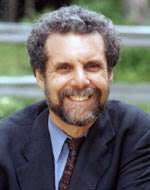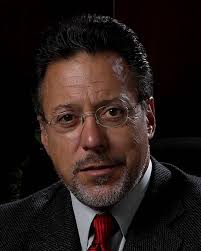Kiran and myself just facilitated a 1-day session. After the session, Kiran is sharing and reflecting with:
"Actually in the session being in the now, stepping back and inviting everyone to observe together what’s happening .. demonstrating our work.. 100% responsibility, deep listening, authentic speaking, questioning to evoke wonder and silence. Owning. Seeing how this is my mirror.. so seeking to understand.."
What a nice idea? Isn't it in fact - not just a nice idea - something of the essence? the essence of what our job - here - is about. What are we here to facilitate?
Clients do call us and do have aspirations for their own "internal" clients - the participants. It is sometimes about mixing few objectives together... sometimes it is about knowing each other better and bonding, sometimes it is about creating a positive experience, from which participants will not only bond but also feel motivated and may be stronger... Often it is also about dealing with, helping to solve some issues... Other times it may be about focusing on some specific business objectives and enabling participants to achieve these.
Alignment: Now to achieve that, to help participants achieve their objectives, it means that there is alignment between the participants in their teams, with their bosses or co-workers. There also need alignment between participants and trainers...
Alignment between people is about respect, trust, and the ability to communicate and in particular to the ability to agree to disagree, while keeping faith in the objectives and in our ability to achieve them.
Any dysfunction in the team - some could say: any lack of integrity in almost any way - will at some point lead to a lack of alignment and/or to a lesser level of alignment: there may be various groups formed in the organisation and this may slow down, hamper the ability to deal with change, adapt, adopt new ways... there may be mis-trust - silently or up to the extent of defiance.... Of course there are various degrees of dysfunction but it is capital for the organisation to spot these areas which are dysfunctional and to start addressing them...
It is hard to imagine a very effective, high-performing team which is not well aligned: it seems important that participants are aligned - as person: trusting and respecting each other, able to communicate etc... - but also as the various links and chains of responsibility leading to the big picture. Therefore it must be a continuous balance and tension between aligning ourselves to the organisation's goals and addressing issues that may block or disturb the same process.
It seems to me that what Kiran is highlighting is precisely this. Seldome are the Human Capital consultants, trainers, given the luxury of time in their intervention. Dealing with business goals and issues like motivation, willingness to take responsibility, character building, integrity... may require many and separate interventions but isn't there a way of facilitation which is powerful enough, holistic enough to handle both personal, behavioural aspects together with organisational, business issues and objectives?
"stepping back and inviting everyone to observe together what’s happening .. demonstrating our work.. 100% responsibility, deep listening, authentic speaking, questioning to evoke wonder and silence."
Being in the now: that 's it... the now of any organisation .... dealing with this beautiful situation where anyone's attitude does have a direct impact on the business outcome... the nice dichotomy between individual behaviors and business outcome is convenient to theories because through compartementalisation it is easier to address issues one at a time.... Now, it is very unconvienent to business people because it all happens NOW... if the market requires this change to my product's positionning, I will take action now as required and will deal with whoever my team, my staff is at this time....
Therefore facilitators learn to handle people and tasks not as sets of challenge, but as one challenge... and therefore one opportunity... The opportunity is to make things work... which is what integrity is about. The conditions to face and ripe the opportunity is to tackel and address the conditions of integrity:
- 100% responsibility and keeping one's agreements in this context
- commitment to effective communication: emotional literacy, authentic speaking, resonant listening,
- commitment to trust and openness - especially openness to failure and mistakes
Among these 3 points, the easiest to achieve is the last: building trust and openess... It is also the most pressing and the most fondamental, as it will enable effective communication and willingness to take charge and own to it.
How do we build trust and openness in our facilitation? Maybe the participants become a mirror and the situation in the classroom mirrors what happens in the office. Maybe the challenges they - the participants - are facing become a mirror to the challenge we as facilitators are facing: what if we - participants - are tired, stressed? We feel pressurized... Nobody really listen to us at work.... Every new project is followed by another one, newer, more pressing and already overshadowing the last one.... therefore real efforts and focus seems less relevant, laughable almost... Now thisd is a bleak picture of someone's view of the office... but assuming some of it at least - is real, then... would not slugginesh, demotivation, cynicism, skepticism be at least understandable from some of the staff?
In any case, isn't it all the more important for the facilitator to show that he/she - as facilitator - operates from a platform of 100% responsibility and full integrity? If it is the case, then YES, it will be crucial during the training to - at some point - stop and observe: what is happening in the room? and how does it mirror some of the challenge we are facing? First: challenges as facilitator and trainees / participants? Second: challenges as staff and colleagues.
Facilitating and processing this reflective process will create trust and openess because it is showing
1- Willingness to learn from the facilitator and openness to the outcome of the training
2- Authenticity about the situation... dealing with the now ... facing reality rather than forcing outcome or discussions.
For the process to be succesful, it needs to be facilitated clearly and set in a context of listening and questionning: how are we functionning as a group now? describe... some keys to highlight and for participants to come up with examples could be: caring about the meeting outcome, caring about others in the meeting (this is the responsibility aspect), patterns of communication and understanding the source of it... , noticing and observing any obstacle to trust building...















